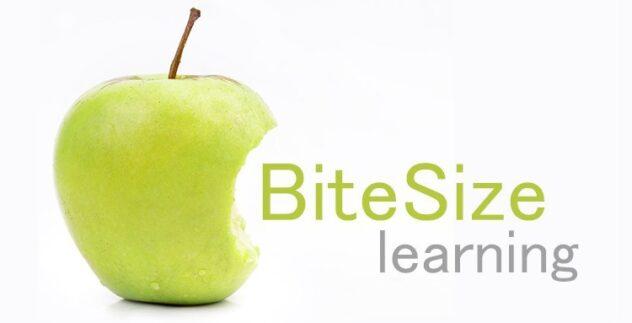Measuring the Impact of Bite-Sized Learning: Strategies,Metrics & Results
Bite-sized learning,also known as microlearning,is revolutionizing corporate training and education with its focused,digestible format. as organizations and educators embrace this powerful approach, a critical question arises: How can we effectively measure the impact of bite-sized learning? In this complete guide, we’ll explore strategies, key metrics, practical tips, and real-world examples to ensure your microlearning initiatives deliver outstanding results.
What is Bite-Sized learning?
Bite-sized learning is a training strategy that delivers content in small, easily digestible chunks, typically lasting from a few seconds up to 15 minutes. Leveraging video clips, quizzes, infographics, and interactive modules, microlearning accommodates busy learners and improves knowledge retention.
- Flexible delivery: Available on-demand, across devices.
- Focused content: Covers one specific topic or skill.
- Engagement-first design: Interactive, visual, and participatory.
Benefits of Bite-Sized Learning
- Improved retention rates: spaced repetition and focused content boost recall.
- Increased engagement: Short modules reduce cognitive overload.
- Faster upskilling: Learners acquire skills on-the-go.
- Higher completion rates: Short lessons fit into daily routines.
- Cost-effective: Reduces development and delivery expenses.
Organizations such as Google, IBM, and Walmart have reported significant gains in productivity, knowledge retention, and employee satisfaction after adopting microlearning strategies.
Strategies for Measuring the Impact of Bite-Sized Learning
to maximize ROI, you need a robust strategy for evaluating microlearning effectiveness. Here are essential steps for comprehensive assessment:
- Define Learning Goals:
- Align each bite-sized module with specific, measurable outcomes.
- Set clear expectations for knowledge, skills, or behavioral change.
- align Metrics with Buisness Objectives:
- Select metrics that support organizational priorities, such as productivity, sales numbers, or customer satisfaction.
- Utilize Data-Driven Tools:
- Leverage advanced analytics via Learning Management Systems (LMS) or microlearning platforms.
- use automated quizzes, surveys, and assessments to gather real-time data.
- Incorporate Feedback loops:
- Gather feedback from learners and supervisors to fine-tune content and delivery.
Key Metrics for Evaluating Bite-Sized Learning
Tracking the right microlearning metrics is essential for understanding impact.Consider gathering both quantitative and qualitative data in these domains:
Engagement Metrics
- Completion rates: Percentage of learners finishing each module.
- Time spent on modules: Identifies content that holds attention or needs enhancement.
- Repeat visits: Indicates perceived value and knowledge reinforcement.
- Drop-off points: Highlights where learners disengage.
Learning Effectiveness Metrics
- Pre- and Post-Assessment Scores: Measure knowledge gained after each module.
- Quiz performance: Real-time quizzes test retention.
- Application of knowledge: Surveys or follow-up assessments to see if skills are used on the job.
- Confidence ratings: Self-assessed confidence pre- and post-training.
Business Impact Metrics
- Productivity improvements: Correlate training rollout to kpis like sales, support resolution, or efficiency.
- Reduction in errors: Fewer mistakes or compliance breaches post-learning.
- Employee retention and satisfaction: Pulse surveys, feedback forms, or eNPS scores.
- ROI: Compare training investment with tangible outcomes.
Proven Results: Real-World Case Studies
Organizations across industries have achieved measurable success with microlearning. Here are a few inspiring examples:
- Cisco: Rolled out bite-sized modules for global certifications. Result: Course completion rates improved by 20%, and certification times were reduced by 30%.
- Unilever: Used microlearning for leadership training.Result: Engagement rates exceeded 90%, and participants reported a 40% increase in confidence applying new skills.
- IBM: Introduced mobile-kind micro-courses. Result: Post-training assessments indicated a 14% improvement in knowledge retention over traditional training.
Practical Tips for Evaluating Microlearning Effectiveness
- Use A/B testing: Test different content formats (video vs. infographic) and measure which drives better engagement and retention.
- Automate data collection: Integrate LMS analytics, quizzes, and feedback forms for seamless reporting.
- Encourage learner feedback: Use surveys and interviews to gain qualitative insights.
- Track longitudinal data: Assess performance over weeks or months to measure sustained impact.
- Benchmark against baseline: Always compare results to pre-implementation data to understand true gains.
- Visualize results: Utilize dashboards or infographics to make data understandable and actionable.
First-Hand experiences: Insights from Learning & Development Leaders
Many L&D professionals have hailed the shift to bite-sized learning for its agility and precision. Here’s what a few have shared:
“Since adopting microlearning, we’ve seen our employee participation skyrocket, and post-training surveys show better recall and on-the-job application. The ability to adjust modules instantly based on feedback has been a game changer.”
– Learning Manager, Global Retail Brand
“Our sales teams picked up new skills faster, and managers could link learning activities to increased sales performance, making ROI conversations straightforward.”
– Head of Training, SaaS Company
conclusion: Unlock ROI by Measuring Impact of Bite-Sized Learning
Bite-sized learning empowers organizations to deliver targeted, flexible, and impactful learning experiences. however, its full value is onyl realized when leaders strategically measure its impact using data-driven metrics aligned to business outcomes. By defining clear goals, adopting robust evaluation strategies, and leveraging the right metrics, L&D teams can prove ROI, continuously improve content, and drive organizational growth.
Whether you’re launching a new microlearning campaign or refining existing programs, use these strategies, metrics, and tips as your foundation for success.The future of learning is agile—and with the right measurement approach, your bite-sized learning will deliver measurable, repeatable results.

